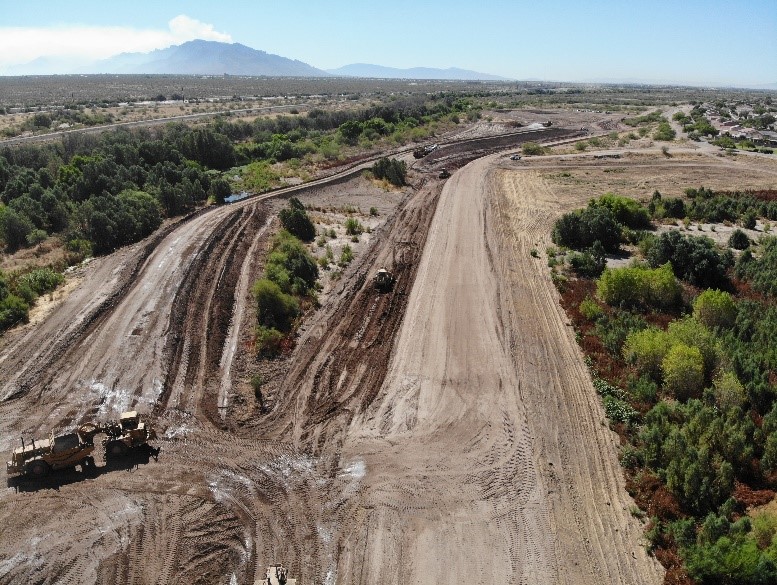El Rio Preserve Soil Cement Embankment Levee – Santa Cruz River
Location: Pima County, Santa Cruz River Near Avra Valley Road
Client: Solis Engineering Company, Tucson, Arizona
Start/Completion of Construction Dates: June 2020 – October 2020
The El Rio Preserve Embankment Levee project is located along the Santa Cruz River near Avra Valley Road in Marana, Arizona. The levee is a soil cement bank protected berm that is designed for a 25-year flood event protecting the Town of Marana El Rio Riparian Preserve allowing for limited controlled storm-water flow into and out of the preserve. The levee is approximately 4,000 feet in length and incorporates a flood-gate controlled culvert and a spillway.
ConformaTech’s role on the project was to provide quality control observation and testing during the construction of the project. We teamed with Solis Engineering which was the acting Resident Field Engineering firm for Pima County Flood Control. Our services included observation and documentation of all aspects of the construction including the following: clearing and grubbing, excavation, soil cement production and placement, final installation of post and railing and hydro-seeding. We performed a soil cement mix design and daily testing of batch plant materials, soil cement specimens, compaction testing on soil cement and backfill among other items. The original amount of ConformaTech’s contract was $94,000.00 and the final amount billed will be slightly below that amount. The remaining fees are planned to be used for petrographic analysis of soil cement specimens as an “add-on” to the project. Project challenges included encountering compressive strength test results on soil cement lower than design thresholds. These low-strength results were clustered around samples obtained during the hottest days of this past summer – particularly for specimen sets made later in the day. Each day of production, four sets of compressive strength specimens were made – beginning in the morning and ending in the late afternoon. The contractor was required to work during regular daylight hours due to the proximity of the project to a residential subdivision. This past summer had the hottest overall temperatures on record, and it was surmised that the temperatures were creating a condition where the Portland cement was hydrating too quickly in the soil cement. The low break values occurred even when the Portland cement was mixed with soil at or above design cement percentages and within the allotted time span for placement.
When increasing the Portland cement content did not sufficiently address the problem, we directed the batch plant to increase moisture contents to compensate for the rapid loss of moisture in the heat. This was combined with additional wetting of the stockpile material before it was added to the batch plant in an attempt to cool the source material. Follow-up petrographic analysis of selected soil cement specimens is in progress to provide additional data and insight. This additional data, combined with the data obtained throughout soil cement production, are being used by the County to development additional specifications and criteria for soil cement placement in hot weather for future projects. Our close monitoring, communication, and teamwork with all parties helped enable the overall project to meet expected quality standards while avoiding project delays and cost over-runs.

